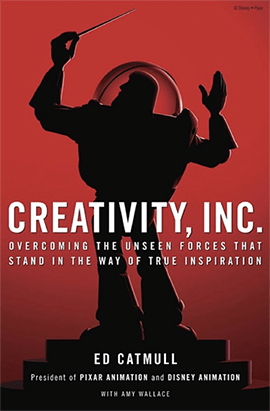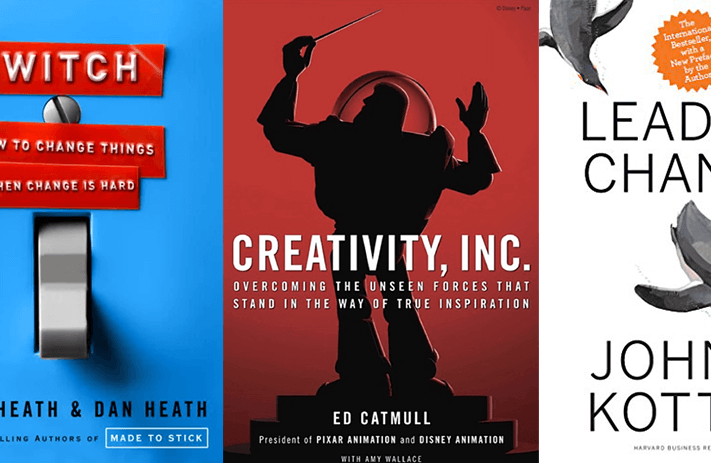
Click the button to start reading
How to Manage Change in Your Business: The 5 Best Books For Change Management
You never stand in the same river twice.
– Heraclitus
The only constant in business is “change.” To stay ahead of the competition and maintain a healthy bottom line, your organization needs to be able to adapt to the ever-changing landscape.
Change can be difficult to manage because it often requires employees to adjust the way they work. This can lead to feelings of insecurity, resistance to change, and even anxiety.
As a business leader, you know that change is essential to growth. But you also know that it isn’t always easy to implement. To stay ahead of the competition and maintain a healthy bottom line, your organization needs to be able to adapt to the ever-changing landscape.
But leading a team through times of change can be difficult. That’s why we’ve put together a list of the 5 best books for change management. These books offer insights on topics such as organizational psychology, Agile methodology, and leadership best practices.
Whether you are looking for a general overview of change management or a more specific look at a particular method, there is sure to be a book on this list that is perfect for you.
Books reviewed in this post:
- Switch: How to Change Things When Change Is Hard by Chip and Dan Heath
- Leading Change by John P. Kotter
- Who Moved My Cheese? An A-Mazing Way to Deal with Change in Your Work and in Your Life by Spencer Johnson
- Driven by Data: A Practical Guide to Improve Efficiencies, Reduce Costs, and Measure Performance in Your Organization by Paul R Super
- Creativity, Inc.: Overcoming the Unseen Forces That Stand in the Way of True Inspiration by Ed Catmull and Amy Wallace
1. Switch: How to Change Things When Change Is Hard
 Author: Chip and Dan Heath
Author: Chip and Dan Heath
Publication year: 2010
As a leader, you know all too well just how difficult it can be to get people on board with a new idea or initiative, especially when it means stepping outside of their comfort zones. So how do we make change happen? How do we get our team members to buy into our vision?
In their book Switch, brothers Chip and Dan Heath tackle this very question.
The Heaths are best-selling authors who have written several books on the topic of organizational behavior. In Switch, they use decades of research in the fields of psychology and neuroscience to explain why change is so difficult – and more importantly, how to overcome those obstacles.
The Heaths identify two different types of obstacles that stand in the way of successful change:
- The first type of obstacle is what the Heaths call the “Rider.” The Rider is the Rational Decision-Maker that resides in each of us. This part of our brain is logical, rational, and analytical. It enables us to make decisions based on facts and data. When it comes to making changes in our lives or our organizations, the Rider often becomes bogged down in details and risk analysis. He gets stuck trying to figure out the best possible solution instead of just taking action.
- The second type of obstacle is what the Heaths call the “Elephant.” The Elephant is our Emotional Self – the part of us that feels fear, anxiety, and uncertainty when faced with change. This part of our brain responds more to intuition than logic. It’s also much more powerful than the Rider; in fact, research has shown that elephants can be up to 10 times stronger than riders! So how do we get past these obstacles?
According to Chip and Dan Heath, the answer lies in what they call the “3 R’s”:
- Directing the Rider – We need to give the Rider a destination by setting crystal clear goals. This will help to focus his attention and energy on the task at hand.
- Motivating the Elephant – We need to appeal to the Elephant’s emotions by painting a picture of what success looks like. This will help to rally him behind the cause.
- Shaping the Path – We need to create an environment that makes it easy for people to take the desired action. This could involve everything from changing the physical layout of your office to implementing new policies and procedures.
Overall, the contribution that Switch makes to the field of change management is twofold. First, it provides a clear and concise explanation of why change is so difficult. Second, it offers practical strategies for overcoming those obstacles and driving successful change in our lives and our organizations.
2. Leading Change
 Author: John P. Kotter
Author: John P. Kotter
Publication year: 1996
In Leading Change, John Kotter provides a framework for leading successful organizational change.
Drawing on his experience as a consultant to some of the world’s largest organizations, Kotter outlines an 8-step process for implementing change:
- Establish a sense of urgency – This means getting everyone on board with the idea that change is necessary and that it needs to happen soon. This can be a difficult task because it requires both effective communication and buy-in from every member of the team.
- Create a guiding coalition – This step involves bringing together a group of people with the power and influence to drive change. This coalition will be responsible for championing the change initiative and keeping it on track.
- Develop a vision and strategy – To successfully implement change, you need to have a clear vision of what you’re trying to achieve. This vision should be inspiring and motivating, something that everyone can rally behind. Once you have your vision, you need to develop a strategy for achieving it. This will involve setting goals, identifying resources, and creating a timeline.
- Communicate the change vision – Change won’t happen unless everyone is on board with the vision. This step involves communicating the vision in a way that is clear, concise, and inspiring. It’s also important to keep the lines of communication open so that people can ask questions and provide feedback.
- Empower others to act on the vision – This step involves giving people the authority and resources they need to take action. It’s also important to remove any barriers that might prevent them from taking action. This might include changing policies or procedures or providing training and development opportunities.
- Plan for and create short-term wins – One of the best ways to maintain momentum during a change initiative is to celebrate small victories along the way. This step involves setting goals that can be achieved in a relatively short period. It’s also important to recognize and reward people who are contributing to the success of the initiative.
- Consolidate gains and produce more change – This step involves taking what has been learned from the previous steps and using it to drive further change. It’s also important to continue to communicate the vision and keep everyone focused on the ultimate goal.
- Institutionalize new approaches – The final step is to make the changes permanent by incorporating them into the organizational culture. This might involve changing policies and procedures, or creating new incentives and rewards.
Leading Change is a classic in the field of change management. It’s one of the first books to provide a comprehensive framework for leading successful organizational change.
Kotter’s 8-step process has been used by organizations all over the world, and it is still relevant today.
3. Who Moved My Cheese? An A-Mazing Way to Deal with Change in Your Work and in Your Life
 Author: Spencer Johnson
Author: Spencer Johnson
Publication year: 1998
Who Moved My Cheese? is a creative book about change. The story tells a fable that narrows in on two types of people’s reaction to change, the ‘mice’ and the ‘littlepeople’.
The book is easy and quick to read, as it is only 96 pages. The story follows two different groups of friends who live in a maze and have to find cheese to survive. The cheese represents what we want in life, such as a job, a relationship, or material possessions.
The first group of friends are mice, who are afraid of change and resistant to it. They cling to the cheese they have and are unwilling to try new things. The second group of friends are little people, who are open to change and adaptable. They are willing to explore new areas of the maze and try new things.
There are 4 characters that represent different reactions to change:
- The first is Hem, who is afraid of change and resistant to it. He clings to the cheese he has and is unwilling to try new things.
- The second is Haw, who is open to change and adaptable. He is willing to explore new areas of the maze and try new things.
- The third is Sniff, who is an early detector of change. He can smell the cheese before it’s there and is always on the lookout for new opportunities.
- The fourth is Scurry, who is quick to adapt to change. When the cheese runs out, he is able to quickly find a new source.
Sniff and Scurry are proactive; they accept change and adapt quickly. Hem and Haw are reactive; they resist change and take longer to adapt.
Johnson provides practical advice on how to lead teams through each stage of change.
For example, the author suggests that during the Denial stage, it’s important to keep Hem informed about the changes that are coming so that he doesn’t feel caught off guard.
During the Resistance stage, it’s important to give Haw space to vent his fears and frustrations before moving on to exploring new solutions.
One of the key takeaways from the book is that change is inevitable; the only thing you can control is your reaction to it. This message is especially relevant for business leaders who are navigating times of uncertainty within their organizations.
Overall, this book provides valuable insights into how humans react to change and how we can better manage our reactions so that we can thrive during times of transition.
4. Driven by Data: A Practical Guide to Improve Efficiencies, Reduce Costs, and Measure Performance in Your Organization
 Author: Paul R. Bailo
Author: Paul R. Bailo
Publication year: 2014
So, what makes Driven by Data so special? First and foremost, it’s important to note that this book is an authority in the field. It’s packed with over 200 pages of data-driven strategies that will help you navigate change within your organization.
But beyond that, it’s also written in a conversational style that makes it easy to read and digest. And perhaps best of all, it provides practical arguments that you can apply to your organization.
So what are some of the key strategies for navigating change within an organization?
According to Bailo, there are three main strategies that every organization should keep in mind: first and foremost people; secondly, process; and lastly technology. Let’s take a closer look at each one.
- People: Perhaps the most important thing to keep in mind when leading your team through times of change is that people are resistant to change by nature. That’s why it’s so important to get buy-in from your team from the very beginning—if they feel like they’re being left out of the decision-making process, they’re far less likely to support any changes that are implemented. The best way to get buy-in from your team is to involve them in the decision-making process from day one; That way, they’ll feel like they have a vested interest in seeing the changes through.
- Process: The second strategy for navigating change within an organization is a process. Implementing changes can be a difficult and chaotic process—but it doesn’t have to be! By documenting and automating your processes, you can make sure that everyone on your team is on the same page, which will make implementing changes much easier (not to mention less stressful).
- Technology: Last but not least is technology. In today’s day and age, there’s no denying that technology plays a big role in organizational change. After all, disruptive technologies are often what sparked organizational changes in the first place! That’s why it’s so important to make sure that your technology infrastructure is up-to-date and able to support any changes that you implement. Otherwise, you run the risk of causing more problems than you solve. Hamamoto Enterprise Solutions offers comprehensive IT services including business continuity planning which helps ensure against disasters large or small.
If you’re looking for a comprehensive guide to change management, then you might want to check out Driven by Data. It’s packed with data-driven strategies that will help you navigate change within your organization—no matter what industry you’re in.
5. Creativity, Inc.: Overcoming the Unseen Forces That Stand in the Way of True Inspiration
 Author: Ed Catmull
Author: Ed Catmull
Publication year: 2014
From the co-founder of Pixar Animation Studios, Ed Catmull, comesz` a book that offers a behind-the-scenes look at how some of the most successful animated films of all time were made.
But Creativity, Inc. is more than just a book about making movies—it’s a book about managing change. In it, Catmull shares his experience leading a team of creatives through times of great change and offers insights on how to overcome the unseen forces that stand in the way of true inspiration.
The book is divided into three sections: The first section looks at the history of Pixar and how it has become one of the most successful animation studios in the world by embracing change.
The second section looks at how Pixar has been able to maintain its culture of creativity despite growing larger and more complex.
The third section offers practical advice for business leaders who wish to create a culture of creativity within their organizations.
Conclusion
No matter what industry you’re in, change is inevitable. How you manage that change can make or break your company. It’s also necessary for growth.
If you’re looking for some guidance on effective change management, check out the five books we’ve listed above. Each book offers something in regards to managing change and effectively navigating those waters.
From practical guides on data-driven decision making to stories of personal transformation, these books will help you understand what it takes to successfully navigate changes big and small. So if you’re feeling lost in a sea of change, pick up one of these books and find your way back to shore.
















